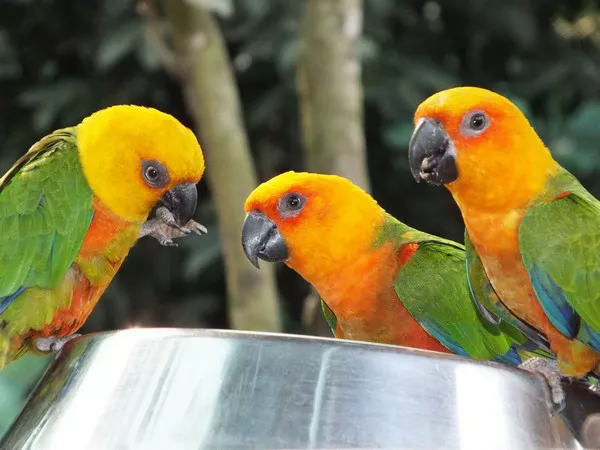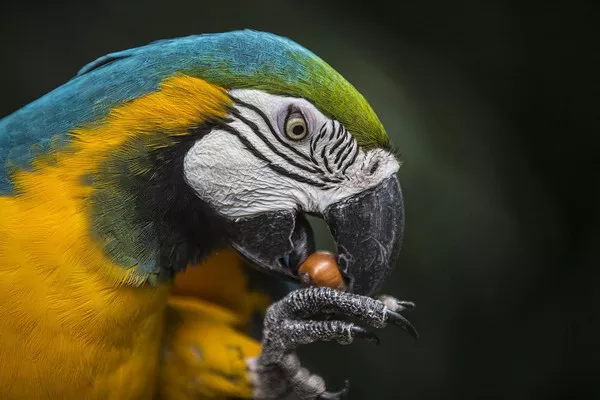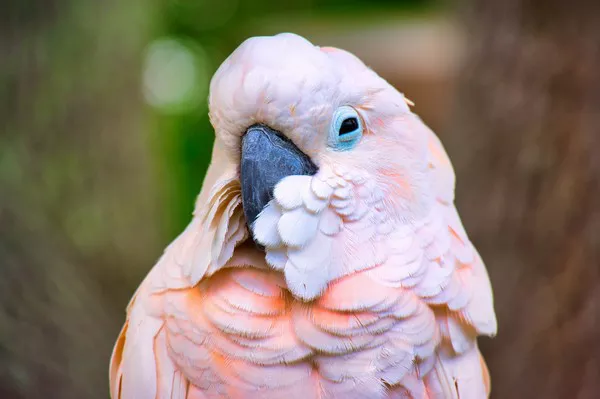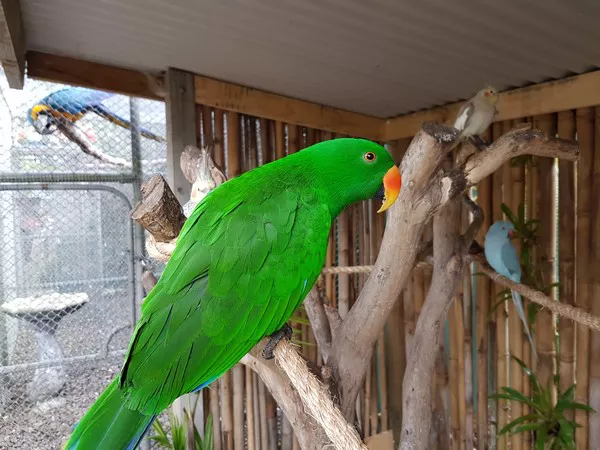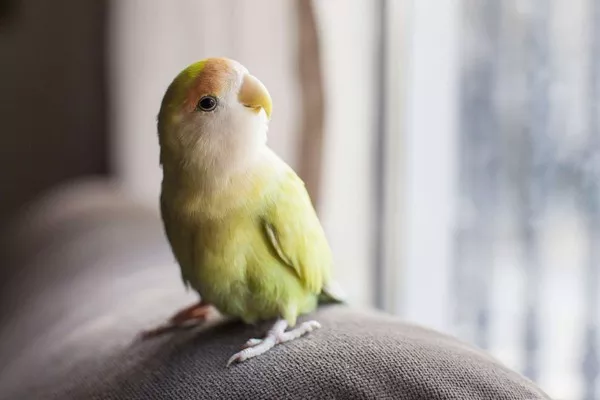Sun conures are among the most striking and captivating parrots, known for their vivid plumage and lively personalities. These small, colorful birds are popular pets due to their beautiful appearance and engaging behavior. While the term “sun conure” generally refers to one primary species, the vibrant world of these parrots includes several variations and related species. This article explores the types of sun conures, their characteristics, and their living habits to provide a comprehensive understanding of these remarkable birds.
The Sun Conure: A Primary Overview
Species Characteristics
The sun conure, scientifically known as Aratinga solstitialis, is a medium-sized parrot native to northeastern South America. Its bright and eye-catching plumage is predominantly golden-yellow, with vibrant orange and green feathers adding to its dazzling appearance. The species is renowned for its colorful feathering, which serves as a natural attractant in their native habitat.
Sun conures typically measure about 12 to 14 inches in length and weigh between 4 to 6 ounces. They have a robust, curved beak and strong, zygodactyl feet—traits common to parrots that aid in their climbing and feeding habits.
Natural Habitat and Distribution
In the wild, sun conures are found in the tropical and subtropical forests of northeastern Brazil, particularly in the regions of the Amazon Basin. They inhabit a variety of forested environments, including rainforest edges, savannas, and gallery forests along rivers. Their preference for dense, lush environments reflects their need for ample foraging opportunities and nesting sites.
Varieties and Mutations of Sun Conures
While the sun conure species itself is relatively uniform in its appearance, there are several notable color mutations and variations within captive populations. These mutations have been selectively bred to enhance or alter the bird’s natural coloration, resulting in a range of stunning variations.
Color Mutations
Normal (Wild-Type) Sun Conure
The wild-type or normal sun conure displays the classic coloration of golden-yellow feathers with orange and green accents. This coloration is the most common in the wild and is a direct representation of the bird’s natural appearance.
Lutino Sun Conure
Lutino sun conures exhibit a striking color mutation where their yellow feathers appear more intense and their green and orange hues are significantly reduced. This mutation results in a bright, almost pure yellow bird with a pale, almost white underbelly. The lutino coloration is due to a genetic mutation that affects the distribution of pigments in the feathers.
Pineapple Sun Conure
Pineapple sun conures are distinguished by their unique blend of colors. They feature a mix of yellow, orange, and green feathers, with a more subdued green coloration compared to the wild-type. This mutation gives the bird a slightly less vibrant but equally beautiful appearance, resembling the colors of a pineapple.
Turquoise Sun Conure
The turquoise sun conure is another popular mutation, characterized by its distinctive turquoise blue feathers mixed with the bird’s natural yellow and green. This variation creates a visually striking contrast and is highly sought after by bird enthusiasts.
White-Faced Sun Conure
White-faced sun conures display a unique mutation where their face feathers appear white or very pale compared to the rest of their bright yellow plumage. This variation highlights the bird’s facial features and creates a notable contrast with the rest of the vibrant coloration.
Red-Factor Sun Conure
The red-factor sun conure exhibits a more intense red coloration in addition to the typical yellow and green. This mutation results in a deeper, richer color palette, with red hues more pronounced in the plumage.
Hybrid Variations
In addition to color mutations, hybrids between sun conures and other parrot species or subspecies can occur. These hybrids often exhibit a blend of characteristics from both parent species, resulting in unique appearances and behaviors. However, hybridization is less common and usually occurs in controlled breeding environments.
Living Habits and Care Requirements
Social Behavior and Interaction
Sun conures are highly social birds with a strong need for interaction and companionship. In the wild, they live in flocks and exhibit strong social bonds, which they carry into their life as pets. They thrive on social interaction with their human caretakers and can develop deep bonds with their owners. Regular interaction, mental stimulation, and companionship are crucial for their well-being.
See Also: Do all African grey parrots have great talking abilities?
In captivity, sun conures benefit from a stimulating environment that includes toys, perches, and opportunities for foraging. They are intelligent and curious birds, requiring mental enrichment to prevent boredom and behavioral issues.
Diet and Nutrition
A balanced diet is essential for the health of sun conures. Their diet should include a variety of fresh fruits, vegetables, high-quality pellets, and seeds. Fresh leafy greens, berries, and other fruits provide essential vitamins and minerals, while pellets ensure they receive a complete and balanced nutritional profile.
Proper diet and nutrition are vital for maintaining a healthy, vibrant plumage and preventing nutritional deficiencies. Avoid feeding sun conures high-fat or sugary foods, as these can lead to health problems such as obesity and feather plucking.
Housing and Environment
Sun conures require a spacious cage to accommodate their active nature. A large, well-ventilated cage with horizontal bars is ideal for their climbing and playing needs. The cage should include various perches, toys, and enrichment items to keep the bird mentally and physically engaged.
In addition to their cage, sun conures benefit from regular out-of-cage time in a safe, bird-proofed area. Supervised playtime outside the cage allows them to stretch their wings, explore, and interact with their environment.
Health Considerations
Regular veterinary check-ups are essential for maintaining the health of sun conures. Routine health assessments, including beak and feather examinations, help detect any potential health issues early. Common health concerns for sun conures include feather plucking, respiratory infections, and nutritional deficiencies.
Maintaining a clean and hygienic living environment, providing a balanced diet, and ensuring regular exercise are key components of keeping sun conures healthy and happy.
Conclusion
The sun conure is a vibrant and engaging bird with a variety of color mutations that enhance its already stunning appearance. While the primary species remains Aratinga solstitialis, various mutations such as lutino, pineapple, turquoise, white-faced, and red-factor add to the bird’s diversity and appeal.
For potential owners, understanding the characteristics, living habits, and care requirements of sun conures is crucial for providing a suitable and fulfilling environment. With their social nature, vibrant colors, and engaging personalities, sun conures make delightful companions for those who are prepared to meet their needs and enjoy their lively presence.
Whether you are considering a sun conure as a pet or are simply fascinated by their unique beauty, this exploration of their types and living habits offers valuable insights into the world of these remarkable parrots.
Related Topics:

